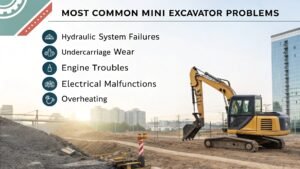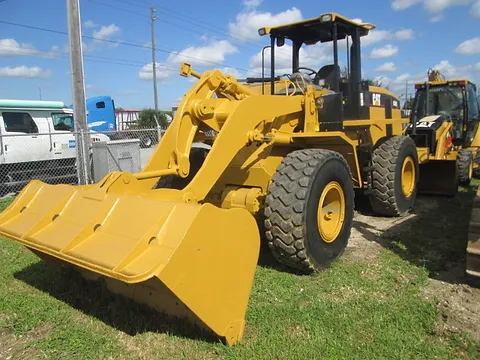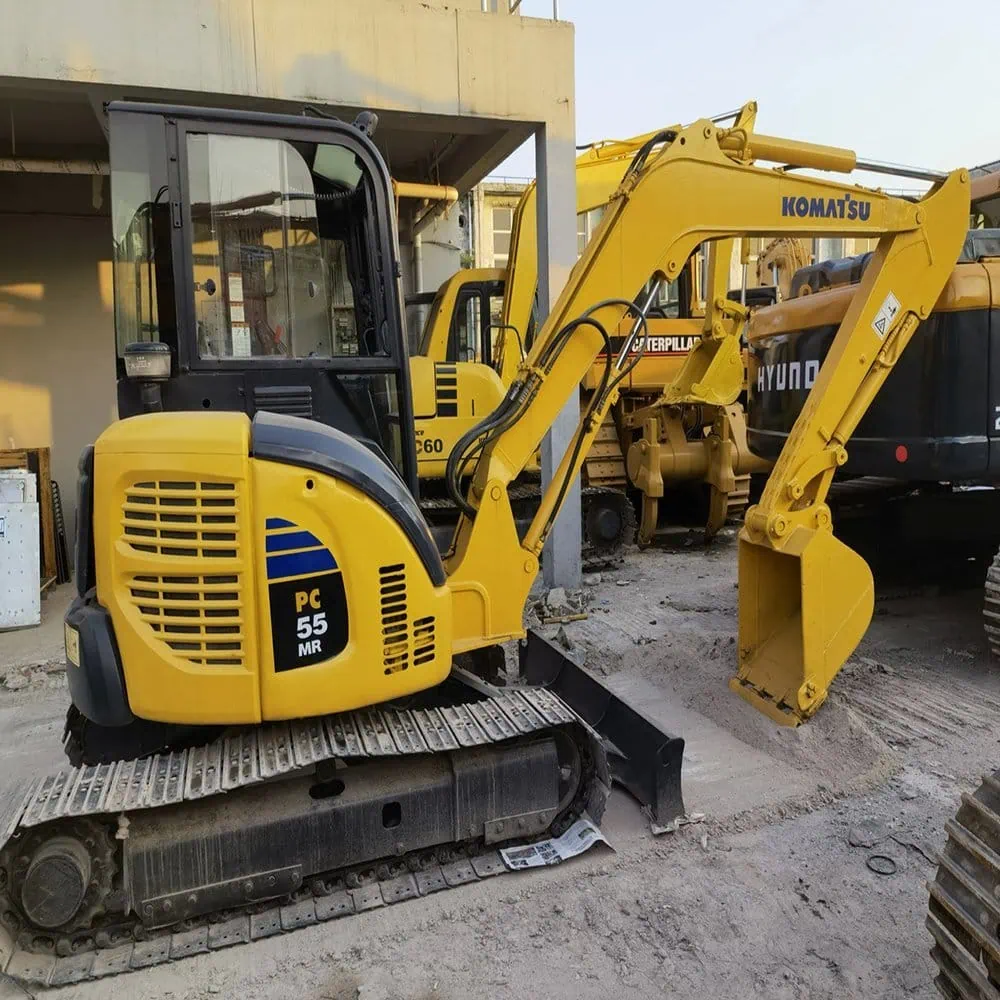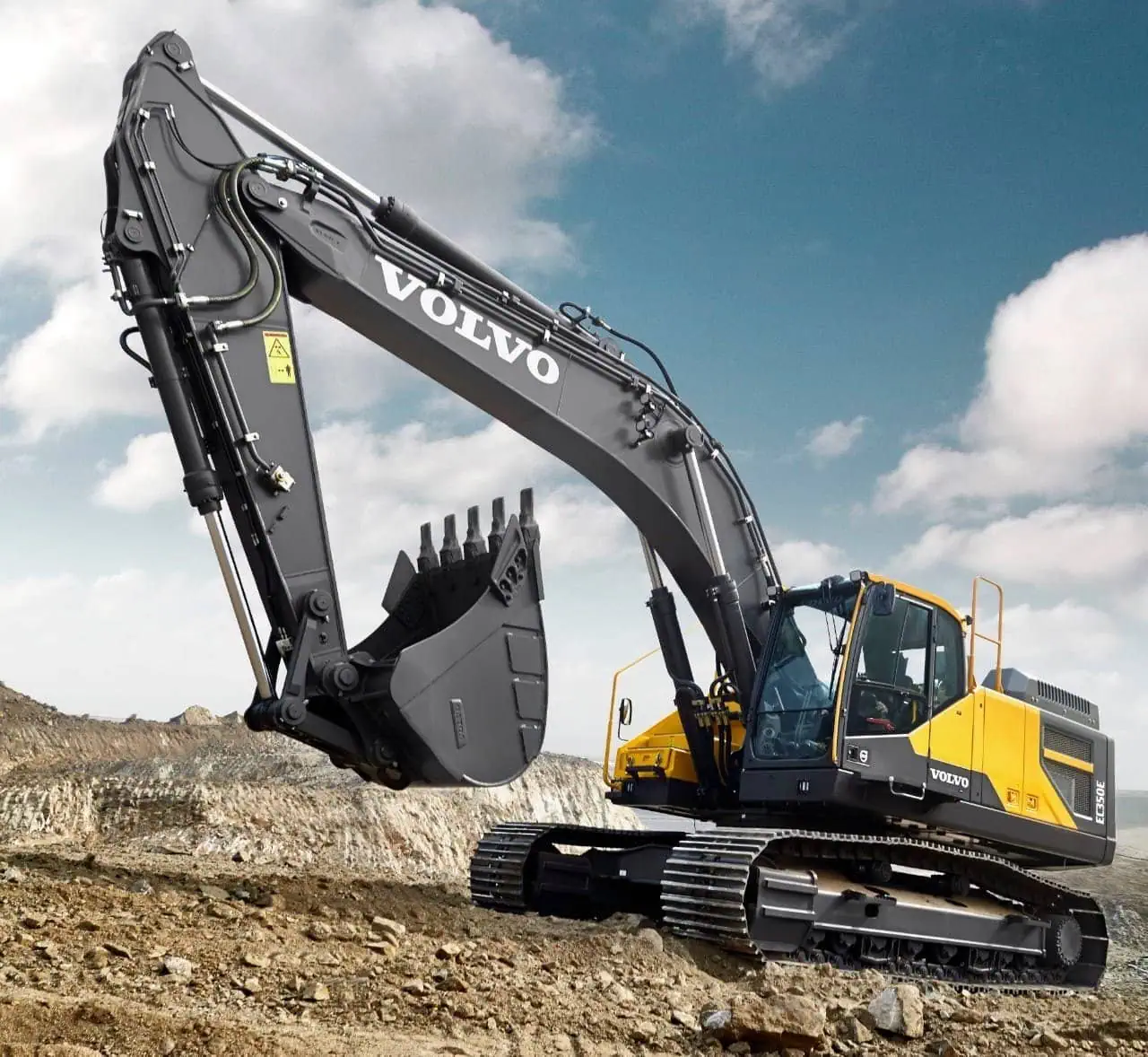There are a few things you need to consider when you are picking out an excavator for trench excavation. The wrong choice can mean a lot of wasted time and a lot of extra money coming out of your pocket. Trench excavation is precise, and you need the right tool for the job. This article will guide you through picking out the right excavator for your trenching work. It will save you time and make sure you don’t make a decision you will regret.
When selecting an excavator for trench excavation, consider key factors like trench size, soil conditions, and required depth. For narrow trenches, mini excavators offer agility, while larger projects benefit from standard or hydraulic excavators. Choose the right machine and attachments for maximum efficiency and safety, ensuring your excavation project runs smoothly.
Now that you understand how important it is to get the right excavator, let’s go through the things you need to think about when you are picking out the best machine for trench excavation.

Table of Contents
ToggleIntroduction to Trench Excavation
Trench excavation is a specialized form of digging where you are making deep, narrow trenches to lay pipes, cables, or the foundation for a building. Unlike general excavation work, trench excavation has to meet certain
requirements in terms of depth, width, and precision. The machine used to do the trenching work is the excavator. What type of excavator you use will greatly affect the speed, efficiency, and safety of the trenching process.
When planning for the excavation phase of your trenching project, you need to think about the specific needs of the project, including how big the trench needs to be in terms of depth, width, and so on (the specifics of trench
size will be covered later). What type of soil are you digging in? What depth will you be digging to? What kind of mobility and power is needed to get the machine into position? Selecting the right machine will save you time
and money by ensuring your work is productive and safe and that you remain in compliance with the rules and regulations.
What is Trench Excavation?
Definition of Trench Excavation
This is the digging of a long, narrow cut into the earth. You see this used frequently to lay water pipes, sewer lines, and electrical cables in cities where there isn’t enough room to dig a big hole and swing around a lot of heavy excavation equipment. This is very precise, and you dig a trench down to a certain depth and a certain width. This is a more precise kind of excavation work than the previous type.
Common Applications of Trench Excavation
Trench excavation is used in a variety of construction projects, including:
- Utility Installation: Trench excavation provides the ditch required to install utility lines like water, electrical, or sewage pipe.
- Drainage Systems: To have a proper drainage system you have to dig a ditch deep enough to move water away from buildings and keep them from flooding.
- Foundation Work: Oftentimes, when you are building a building, you need to dig a trench to lay your foundation. This is particularly true if your ground is not stable or has a propensity to move around.
Need for Specialized Machinery
You need specialized equipment to dig a trench because you have to be so precise and because you need to be efficient. Using standard construction equipment isn’t practical for this because it’s not accurate enough, doesn’t dig deep enough, and isn’t powerful enough. Excavators are designed to work in tight spaces and to dig the exact size trench you need. Add the fact that with the right attachments, you can use the same equipment to dig the trench, set the pipe, and backfill the hole. There isn’t a more versatile tool in your arsenal when it comes to trench excavation than your excavator.
What is Excavation?
General Definition of Excavation
Excavation: The process of moving earth or rock to make space for new construction, mining, or for other purposes. This is a broad term used to describe digging a hole. Excavation can mean anything from trenching and digging the foundation for a new house, all the way to digging a giant hole in the ground for mining operations. Excavation can be done manually or with the help of machinery such as backhoes, bulldozers, or excavators.
Trench Excavation as a Subset of Excavation
Trench excavation is a subset of general excavation work, but it requires more precise method of working. When we talk about general excavation, it could be a huge, wide-open hole like you’d dig to build the foundation for
your new house, or to dig a big hole so you can mine brand-new coal in Wyoming. Trench excavation is the act of digging a long, deep, skinny hole. You drill to a very specific depth and width of the trench you’re digging. It takes more precision and control to keep from busting something while you dig, and you need to keep the trench within pretty specific parameters.

Key Considerations When Choosing an Excavator for Trench Excavation
Choosing the Right Size Excavator
The size of the trench is one of the primary factors in choosing the right excavator. If you need a tiny little trench, maybe you dig that with a mini excavator. It’s perfect for those little spaces and little dirt to move. When you punch in for a big hole, that’s a much bigger hole, and you need a different kind of excavator to effectively and safely dig. Maybe you need a standard excavator or maybe even a backhoe, or a hydraulic excavator to dig that big trench.
- Mini Excavators: These are lighter weight, compact machines that are easy to move around. They excel in small holes when you need to work in super-tight quarters in urban environments or narrow slot trenches with very limited access space.
- Standard Excavators: If you need a machine to dig a larger trench, then you need that next size excavator. Whether it’s a standard excavator, or if you like to go hydraulics, or whatever you’re working with, these bigger excavators give you more power, a bigger bucket, and the stability to dig deeper and wider trenches.
- Crawler Excavators: Your crawler machines are better than wheeled machines when you’re going off-road, or you’re moving over rougher terrain. These machines are more stable and can usually dig a deeper, wider trench.
Trench Depth and Width Considerations
The depth and width of the trench also dictate the type of excavator you will need. If you are only cutting a shallow trench, you may be able to use a smaller and more maneuverable machine. However, if you need to dig a
deep or wide trench, you may need a bigger and more powerful machine. Excavators with longer arms and stronger hydraulics will allow you to dig a deeper trench than one with a shorter arm.
- Utility Trenches: Be sure to choose the right sized trencher or plow for the job. Hello! I’m here to help you with all your buying needs. Mini or compact excavators are all you need for shallow trenching.
- Deep Trenches: Standard or crawler excavators will support these jobs as they have the reach and power to dig deep and keep your trenches opened up the correct amount.
Ground Conditions and Their Impact
Ground Conditions You will also need to consider ground conditions when deciding which type of excavator to use. If the soil is rocky, hard, or uneven, you will most likely need to use a crawler or hydraulic excavator, since they will have more power and more stability. However, if the soil is soft or loose, you may be able to use a mini excavator.
- Rocky Soil: For decomposed or solid rock, you can attach a ripper to the standard or crawler excavator to bust through the rock.
- Loose or Wet Soil: These soil types are where a mini excavator can still work. However, you will not be able to efficiency rock any shots and it will not dig as deep or faster as it would in ideal conditions. If a mini-excavator will not work, then you will need a full-sized excavator.
Excavator Attachments for Trench Work
Attachments like trenching buckets will help with the efficiency of the trench and come in handy. These buckets will produce a consistent trench because they are designed to cut a precise width most of the time. Rippers or a rock auger will help you penetrate hard material or drill into the dirt to put up signs, fence posts, or foundations but are otherwise not essential for trenching.
| Attachment Type | Functionality | Use Case |
| Trenching Bucket | Creates narrow, precise trenches | Ideal for standard trench excavation tasks |
| Ripper | Breaks hard materials like rock | Useful for rocky or tough ground conditions |
| Auger | Drills through soil | Used in soft to medium ground for creating deep holes |

Why is Safety Important in Trench Excavation?
Common Risks in Trench Excavation
Trench excavation comes with inherent risks that must be mitigated to ensure the safety of workers and equipment. Some common risks include:
- Structural Damage: Collapsed trenches can lead to damaged surrounding structures such as buildings, roads, or bridges.
- Regulatory Fines: OSHA imposes fines on companies that do not follow trench safety regulations, and the fines can be hefty.
- Legal Costs: If a worker is injured or killed on the job, the company could be sued and required to pay legal damages.
Excavator Safety Features
Modern excavators come equipped with several safety features designed to minimize risks during trench excavation. These include:
- Roll-over protection to keep the operator safe in the event of a rollover.
- Automatic safety sensors that will tell the operator if there is anything dangerous in the way and move the equipment if it is unsafe.
- Stabilizers that keep the equipment from tipping over when operating on slopes or uneven ground.
Best Safety Practices for Trench Excavation
To maintain safety on a trench excavation site, operators and workers must follow best practices:
- Use Trench Shoring: Install trench boxes or shields to prevent trench collapse.
- Use Proper Training: Only trained operators should use heavy equipment to help avoid accidents.
- Use Competent Person To Watch: Have a designated competent person to watch at all times if you are using lifting equipment around a trench.
- Look Out Above: Keep an eye above your head on a trench where someone is using a machine to dig. Notes
Protective Systems in Trench Excavation
Consequently, death or serious injury from a cave-in is almost guaranteed. But you won’t live long enough to suffer any of these consequences if you fall off an unguarded trench edge and onto the pile of crap below. Consequently, probably the most important thing you can do is guard the edges of the trench. That’s where you’re most at risk. The installation of trench protective systems, trench boxes or shoring systems, for example, helps stabilize the trench walls and protects against cave-ins making it safer for employees working in the trench. These systems are designed to handle the pressure from the surrounding soil, holding it back so the workers can perform their excavation work without worrying about getting buried.
What Are the Best Types of Excavators for Trench Excavation?
Mini Excavators for Trenching
Mini excavators are great for working in tight spaces where you can’t get a big excavator in. Their digging capability is fine for shallow trenching. So, for residential or some urban work, these machines might be a good choice. On the other hand, if you need to trench 20 feet deep or dig up some extremely hard material, then you’ll probably need a full-size machine.
Standard Excavators for Deeper Trenches
For mid-sized trenching projects where you need to dig deeper than 10 feet, you will need a standard excavator. You may also hear it referred to as a hydraulic excavator. This is a much larger machine, it’s much more powerful, and it runs off a hydraulic system which allows it to trench and cut to great depths. You would use an excavator for larger main lines, larger infrastructure projects, or where you need to bone up against a building, and you need something that can be very precise in digging.
Crawler vs. Wheeled Excavators for Trench Excavation
Trencher attachments can be found for both skid steers and compact track loaders. You can rent these from most rental yards if you only need it for a short period. Trenchers are great for small jobs and residential work. However, when the job gets a bit bigger, trenchers are typically too slow. The only time you would use a trencher is in a minor, residential facility.
Hydraulic Excavators for Precision and Efficiency
For electrical work, trenching needs to be precise, and it’s just faster to use a mini excavator. You will be a lot happier with a mini excavator than with a ripper, a skid steer trencher, or a walk-behind trencher. Another thing that controls your lease-versus-buy decision is how much you use it. If you think you need to use one ten times a year, just go rent it. And, oh yeah, if you buy trenchers, they just sit around and rot, and you won’t use them. Why? Because you bought them. It’s always that way.
Benefits of Using Used Excavators for Trench Excavation
Need an excavator but don’t want to spend a ton of money? You can always opt for a used one. This is especially useful for small operators or even bigger firms that only need a machine for a short period. Used machines can be just as good as new ones, and used is definitely where the bargains are found.跳转至当前
Trench Excavation Attachments to Maximize Efficiency
Trenching Buckets
Baseline Definition: those specialized attachments a manufacturer makes specifically for digging narrow, deep trenches. Their configuration helps maintain consistent side configuration and grade so you don’t get overly deep, wide, or shallow.
Rippers and Augers for Trenching
When you need to cut through hard-packed ground and tough material, ripper teeth and augers can help you break through challenging material. These attachments can help speed up trench excavation and work through materials that would otherwise slow you down or stop progress altogether.
Attachments for Extra Depth and Precision
Sometimes you encounter the need for attachments that allow you to work more-precisely and perhaps significantly deeper than normal. Welcome to the wonderful world of the super specialty attachments that allow you to reach new depths or become more precise than normal with your trenching operations!

Techniques to Boost Trench Excavation Productivity
Best Practices for Efficient Trench Excavation
To maximize productivity during trench excavation:
- Plan Your Trench Run Well: If you’re trenching in an open area, take time to plan where you want your trench to go. You want to avoid obstacles, but you also want to avoid unnecessary digging. Be smart and plan your path before you start digging!
- Use Good Technique: The faster and better you can dig from Point A to Point B, the more money you’ll make. Find ways to streamline things so you can dig the trench fast and do a great job.
- Maintain Your Equipment: This falls under the general category of staying out of downtime. It’s not just about the excavator. If you’ve got attachments for trenching, you need to keep those up, too.跳转至当前
How to Avoid Common Mistakes in Trench Excavation
Typical Mistakes in Trench Excavation
Some of the most common mistakes include:
- Digging Trench Too Deep: You might be new and not have the trench figured out or keep digging too deep, then have to rework.
- Using the Wrong Tool: You may have the wrong piece of equipment, and it may not be able to dig the right size trench, or it can’t cut through the specific soil.
- Ignoring Safety: All safety procedures and regulations are for the safety of you, your men, and anybody and everybody around you. Always, always, always do things like you’re supposed to. Always have a job safety analysis. Always do daily checks. Always keep safety in mind every day of every week. Always document all your daily maintenance checks.
Tips for Avoiding Trench Excavation Mistakes
- Check all connections: Before digging, make sure that your machine and attachment connections are secure and that hydraulic hoses are routed to minimize pinching hazards.
- Get the thumbs up: Let workers know you’re about to start the machine so no one is near the machinery or inside the trench.
Conclusion
Choosing the best excavator for trenching means more than just digging. Whether you’re working in small utility trenches or on a vast infrastructure project, selecting the right machine can mean the difference between a safe, efficient job and something else. Considering trench size, depth and soil conditions will help you get the equipment that is right for your application and is also stable and safe to work with.










